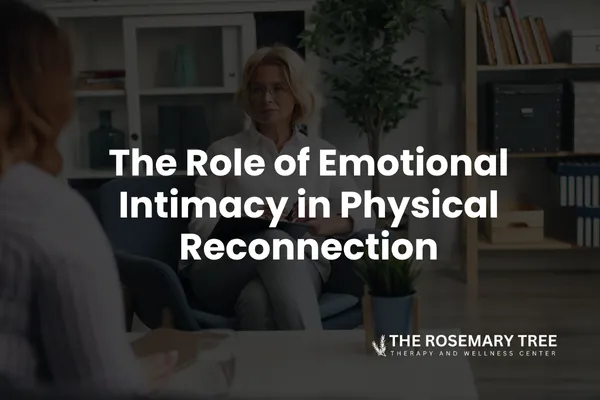
The Role of Emotional Intimacy in Physical Reconnection
The Missing Link Between Trust and Touch
After betrayal, couples often focus on whether physical intimacy will return, but what truly determines readiness is not desire, it is emotional safety.
Many couples rush to “fix” intimacy, hoping closeness will mend the pain. But when safety has not been reestablished, physical connection can feel mechanical or even triggering. The heart needs comfort before the body can follow.
As we explored in When Intimacy Feels Unsafe After Betrayal, safety begins in the nervous system. Emotional intimacy is what teaches the body it is safe to open again.
What Emotional Intimacy Really Means
Emotional intimacy is not about grand gestures or constant vulnerability. It is about feeling seen, heard, and accepted even in discomfort.
You build emotional intimacy when you:
Listen without trying to fix or defend
Respond with warmth instead of distance
Make space for each other’s emotions without judgment
Share honest feelings about fears, desires, or hesitations
In trauma recovery, this kind of emotional safety allows both partners to breathe again. Once that sense of safety returns, physical intimacy often begins to follow naturally.
Why Emotional Connection Feels Hard After Betrayal
After trust has been broken, both partners may feel disconnected. The betrayed partner often guards their emotions to avoid being hurt again. The partner who caused harm may hide behind shame or fear of rejection.
This distance makes emotional closeness feel risky. You may both crave connection but struggle to know how to reach for it safely.
That is why rebuilding emotional intimacy must be intentional, slow, and rooted in mutual care.
How to Rebuild Emotional Intimacy Before Physical Closeness
Start with Honest Conversations
Talk about how you feel without rushing to problem-solve. Naming emotions like fear, sadness, or hope helps both partners understand each other’s inner world.Use Eye Contact and Presence
Simple moments of genuine attention, like looking at each other or staying present in silence, help the body relearn that connection is safe.Share Gratitude Regularly
Express appreciation for the things your partner does right. Gratitude replaces defensiveness with warmth.Set Emotional Boundaries
Respecting limits around topics, touch, or timing prevents overwhelm and builds trust in each other’s words and actions.Find Non-Physical Ways to Connect
Shared laughter, walks, or small daily rituals restore closeness without pressure. Emotional intimacy grows in these quiet, steady moments.
The Science Behind Emotional Intimacy
Emotional intimacy regulates the nervous system. When you feel safe with your partner, your brain releases oxytocin, the bonding hormone that helps calm fear and increase trust.
Without emotional intimacy, attempts at physical closeness can trigger cortisol, the stress hormone, instead of connection. This is why forcing intimacy before readiness often leads to more distance.
Your emotional connection must come first. The body will follow once it feels safe again.
How Accelerated Outcomes Therapy Supports Reconnection
Our Accelerated Outcomes Therapy Intensives help couples slow down and rediscover emotional intimacy in a structured, supportive environment.
In these intensives, couples can:
Relearn how to communicate without defense or avoidance
Rebuild trust through guided conversations and exercises
Identify triggers that block connection
Practice co-regulation, calming each other’s nervous systems in real time
Reconnect emotionally before physical intimacy resumes
With the right guidance, couples often rediscover a deeper level of closeness that feels genuine, safe, and mutual.
When Emotional Closeness Feels Scary
Opening your heart again can feel even more vulnerable than physical closeness. You may fear rejection, conflict, or another heartbreak. These fears are valid, and they are part of the process.
You do not have to rush emotional connection. You only need to stay open to it. With care, communication, and guided support, it will come back stronger than before.
Final Thoughts
Rebuilding intimacy after betrayal starts long before the bedroom. It begins in the heart. Emotional safety is the foundation where physical connection can grow again, slowly and naturally.
If you and your partner are ready to reconnect emotionally and rediscover trust, we would be honored to help. You can reach out to us here, and our team will connect with you to talk about what this process could look like. There is no pressure, only care and space to rebuild with understanding.
